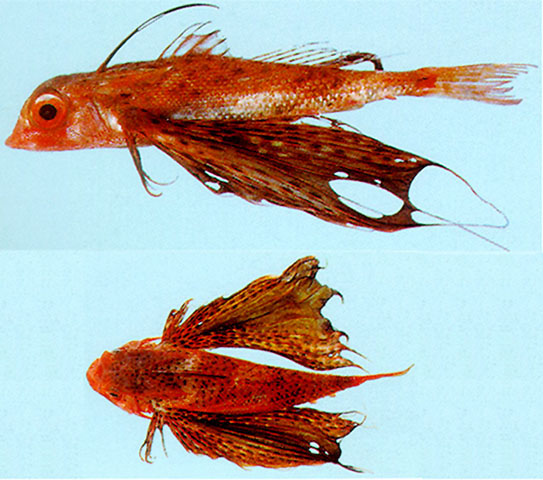| Dactylopteridae (Flying gurnards) |
| 36 cm TL (male/unsexed) |
|
demersal; marine; depth range - 400 m |
| Indo-West Pacific: East Africa to Japan and the Ogasawara Islands, south to northern Australia, including the Arafura Sea (Ref. 9819). Russia in Peter the Great Bay, northward to Olga Bay (Ref. 56557). |
|
Dorsal spines (total): 6-6; Dorsal soft rays (total): 9-9; Anal spines: 0-0; Anal soft rays: 6-6 |
| Found on the shelf and shelf edge (Ref. 11230), over sandy bottoms in coastal areas. Feeds on benthic crustaceans (Ref. 5213). Rarely used as food. |
|
Least Concern (LC); Date assessed: 02 March 2015 Ref. (130435)
|
| harmless |
Source and more info: www.fishbase.org. For personal, classroom, and other internal use only. Not for publication.
